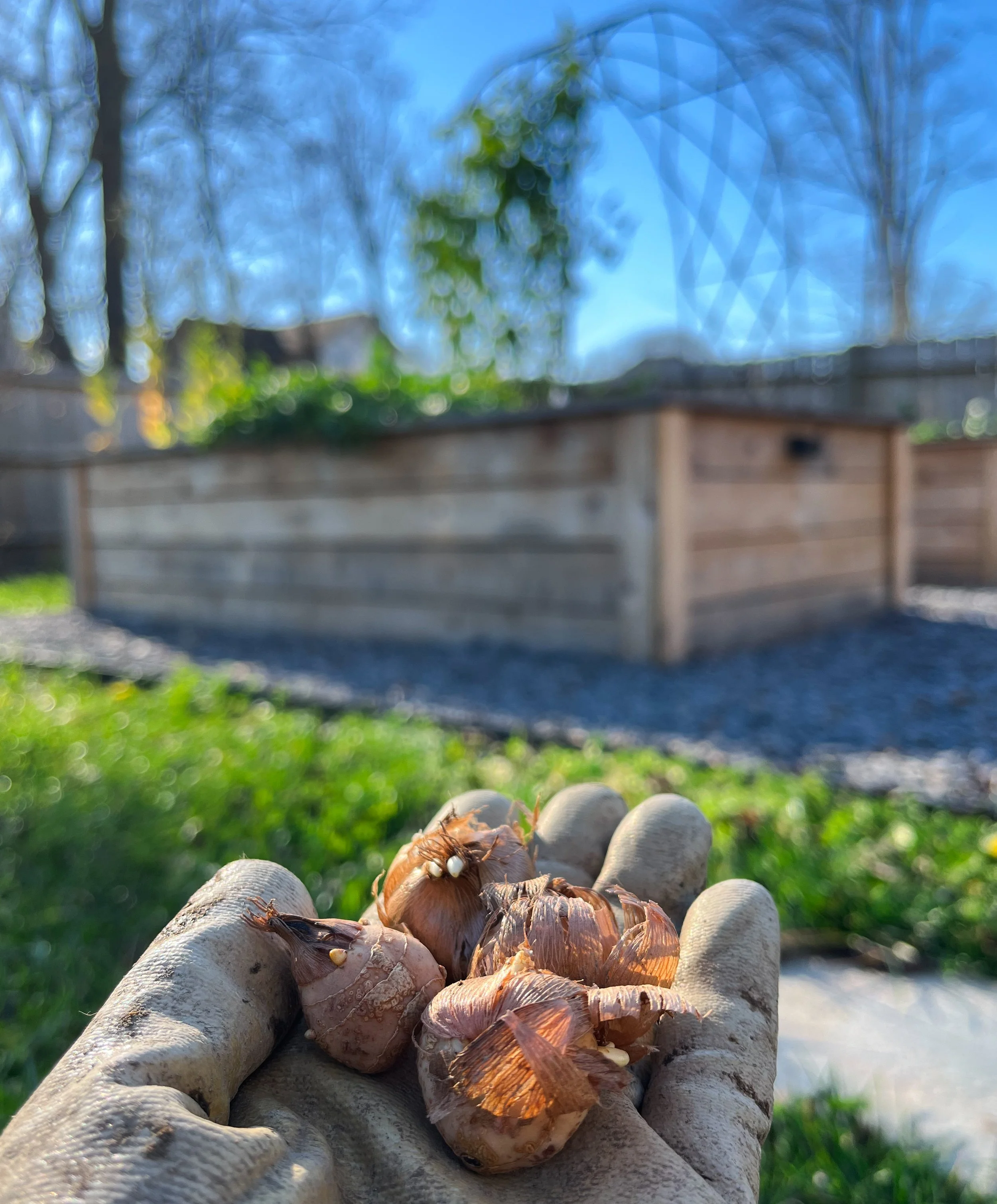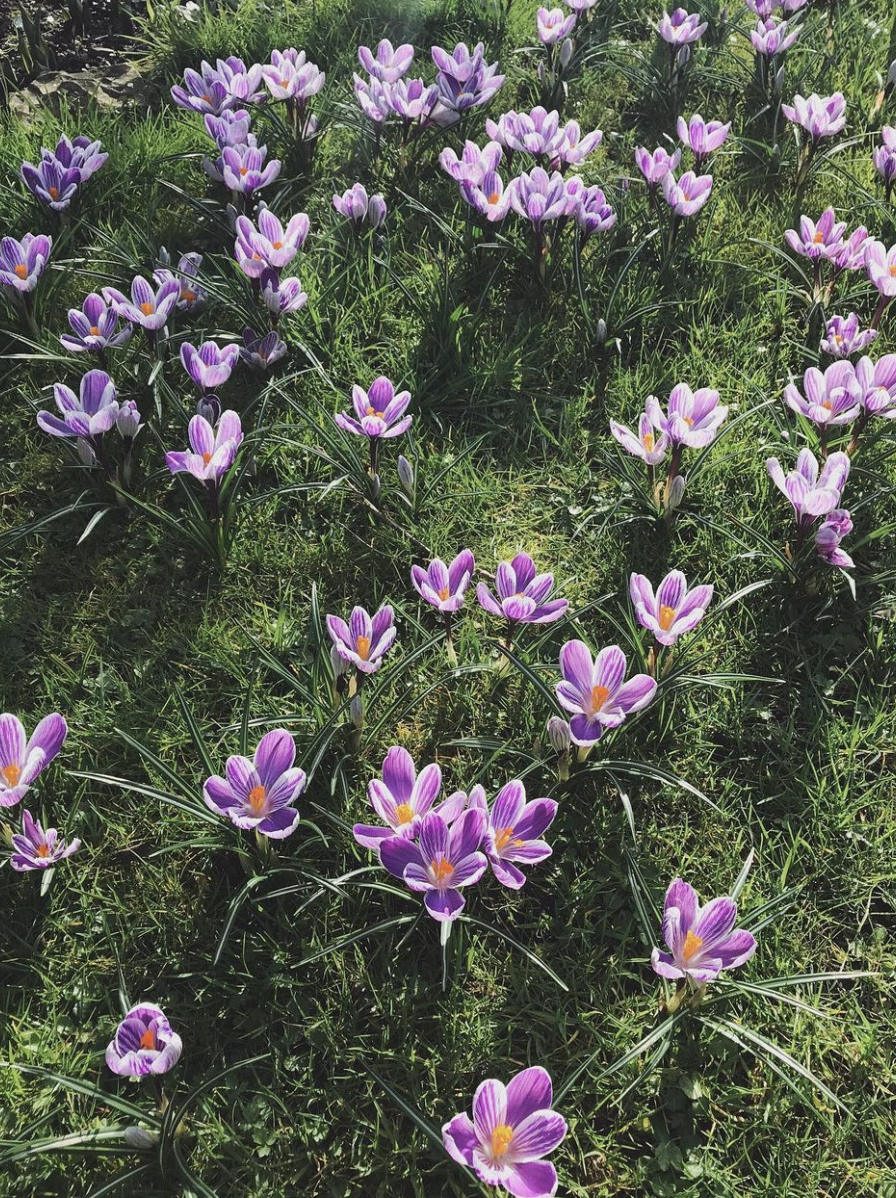Crocuses & Corms
Crocus corms
Planting a crocus lawn today!
Crocuses are one of the earliest blooming flowers in springtime. Their colorful blooms bring joy on grey days and provide crucial nectar for early foraging bees. I enjoy having a bit of lawn surrounding my kitchen garden, but now it will be a little more beneficial to those visiting my garden in early spring!
While I hope to have this outcome next year, this year is my test year. I planted 25 corms to see if the conditions in my lawn are okay for the crocus. Crocus like well-drained soil in a partial to full sun location. While I have the sun, my soil tends to drain slowly. If these 25 survive and thrive, I'll be planting many more next fall!
Inspiration image from @monalogue
Fun facts about Crocuses & Corms
Crocuses grow from corms, not bulbs. A true bulb will have layers and a complete embryo of the plant to come will form within it as it grows. Corms, on the other hand, are solid masses of food, like little batteries, with a basal plate on the bottom and eyes or buds on the top. Plant the corms with buds facing up (These two buds look like little fangs).
The corm you plant is consumed by the plant as it grows, but before it withers away it creates a new corm (or several!). As they multiply, the corms will come close to the top of the soil.
Every 3-4 years, dig up the Crocus corms in the fall after the foliage has died back and yellowed. Divide them, keeping only healthy bulbs and replant. Apply a natural bulb fertilizer in the fall and enjoy your cheerfully blooming crocuses for years to come.
Did you know Saffron comes from a crocus? Unlike the crocus I planted in my yard, Saffron crocus bloom in the fall and produce the most expensive spice in the world. Other favorite flowering corms include Anemone, Crocosmia, Ranunculus and Gladiolus.


